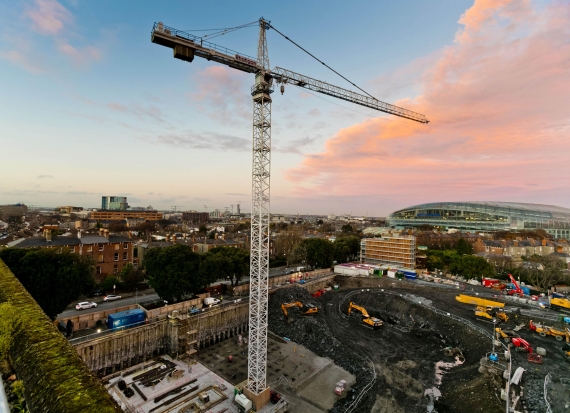
New research published today by the Economic and Social Research Institute (ESRI) warns that policies should aim to rebalance growth by encouraging regional development led by a small number of large urban centres outside Dublin.
The research provides projections for regions and counties across Ireland up to the year 2040, examining what will happen if current spatial planning patterns continue, and what would happen in a range of alternative scenarios.
The Institute believes if the current pattern of growth continues, it will lead to a further gap in prosperity between Dublin and the rest of the country. In Dublin, it will lead to additional housing demand and increased long-distance commuting, according to the experts.
The research finds that the most positive outcomes would result from a scenario in which growth is split equally between the East and Midland region and the rest of the country. This would relieve pressure in the Dublin region, while still allowing significant growth.
The ESRI believes scaling up second-tier cities would provide a greater range of functions in surrounding areas. To achieve this, they say it is necessary to develop within the cities the necessary infrastructure, such as water and wastewater infrastructure, urban public transport, schools etc.
They warn that it is essential that affordable housing and other amenities are provided in cities in order to attract people to live there and to avoid further sprawl. The increased scale of the second-tier cities would allow them and their wider hinterland to generate more start-up firms and attract more FDI, according to the ESRI.
Projections show that if current trends continue, population growth, employment growth and jobs growth will be concentrated in Dublin and the mid-east of Ireland. According to the report, population growth will be greatest in and around the major cities, particularly Dublin. The share of population in the Dublin and Mid-East region will grow from 40% to 41.7% by 2040. This means the population in this area will increase from 1.91 million in 2016 to 2.35 million in 2040.
Above average employment growth is projected for the Mid-East (1.6% annually) and to a lesser extent in the South-West (1.5%), West (1.5%) and Border (1.4%) regions.
Dublin and the Mid-East are projected to have above average growth in the number of jobs available (1.7% annually). Jobs growth is projected to be slowest in the Border, South-East and Mid-West regions (0.9%).
Speaking this week, Edgar Morgenroth of the ESRI commented, "When economic activity is concentrated in one centre, national economic performance is reduced. The lack of scale of the second-tier cities in Ireland reinforces the dominance of Dublin and limits the development potential of the other regions. Investing in second-tier cities is essential to ensure sustainable economic growth outside of Dublin."
Source: www.businessworld.ie
















